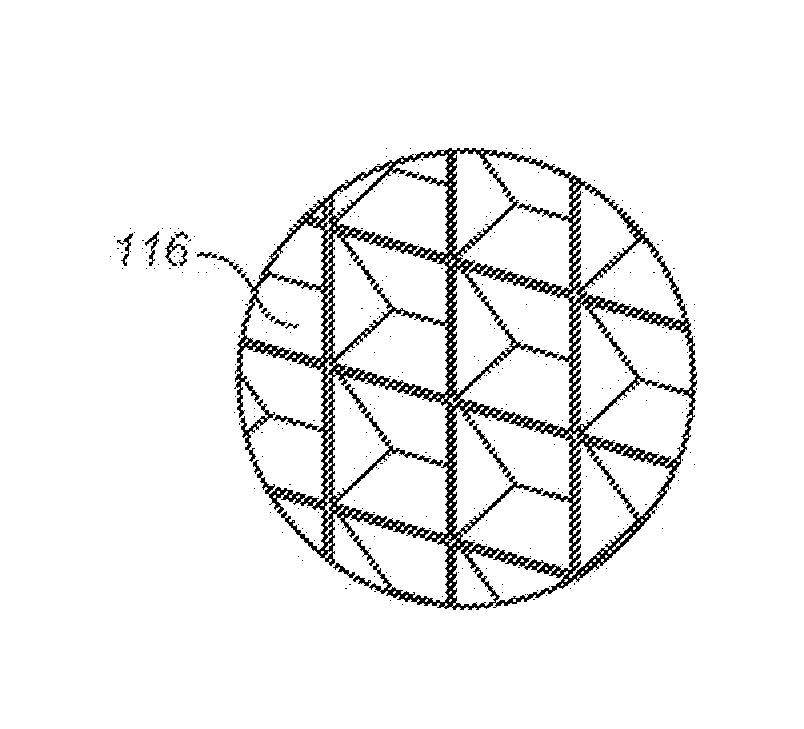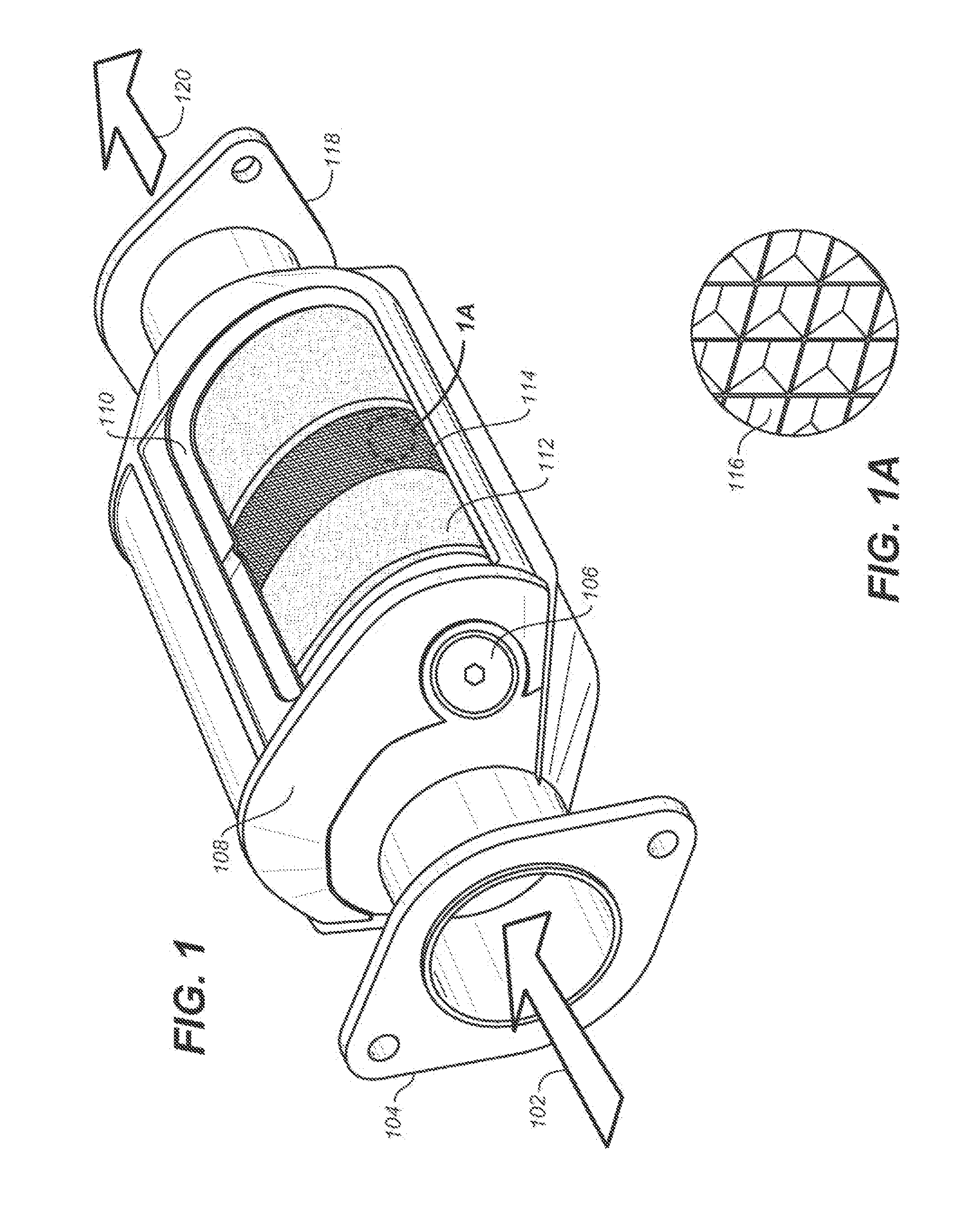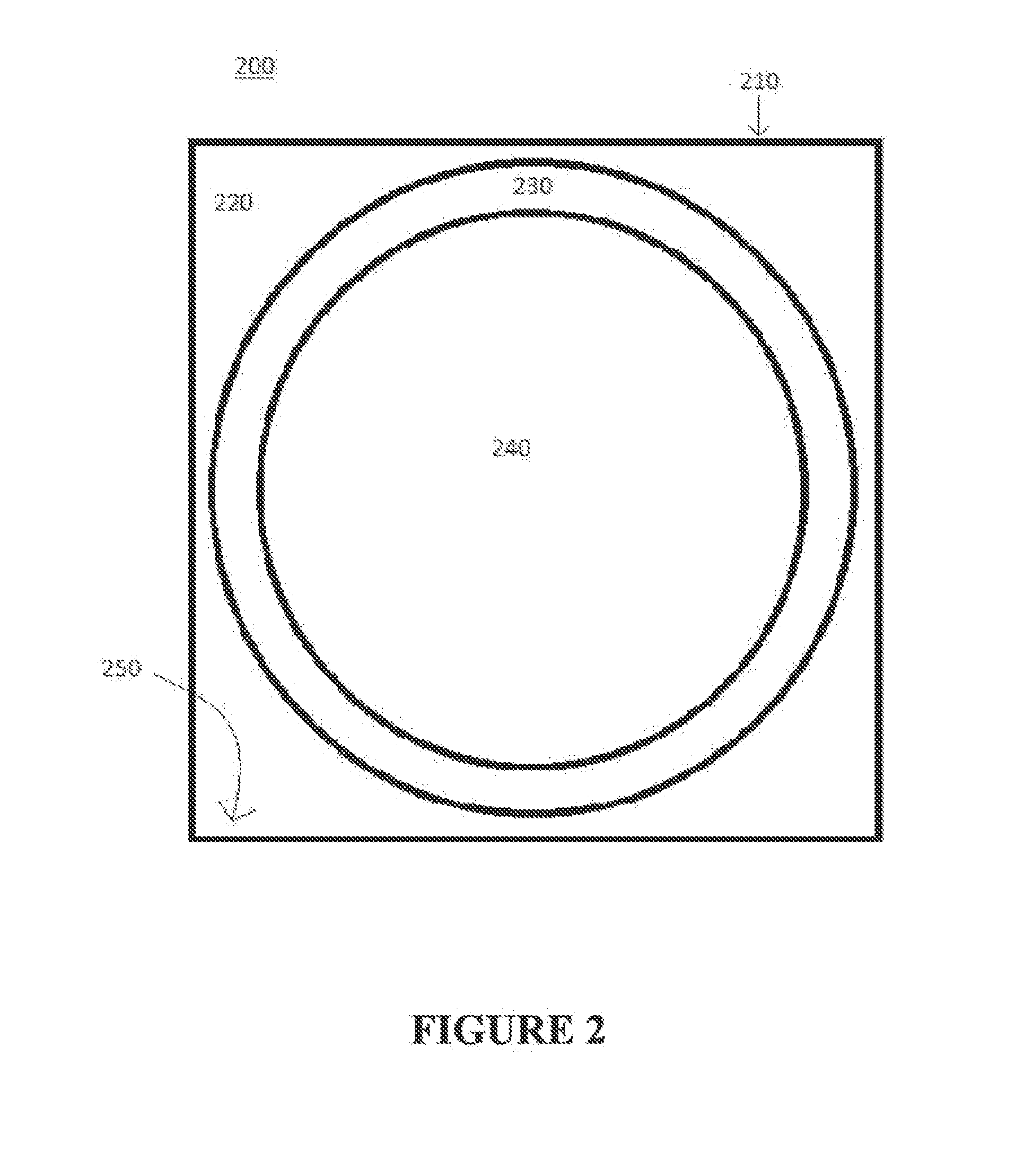Catalyst design for heavy-duty diesel combustion engines
a technology for diesel combustion engines and catalysts, applied in physical/chemical process catalysts, metal/metal-oxide/metal-hydroxide catalysts, separation processes, etc., can solve the problems of reduced efficiency, reduced surface area, and large cost of pgm catalysts
- Summary
- Abstract
- Description
- Claims
- Application Information
AI Technical Summary
Benefits of technology
Problems solved by technology
Method used
Image
Examples
embodiment 1
[0251]A coated substrate that is free of zeolites comprising: a substrate; and a washcoat layer comprising: boehmite particles; a first catalytically active material comprising platinum and palladium in a weight ratio of 10:1 platinum:palladium to 100:1 platinum:palladium, or platinum and no palladium, wherein the first catalytically active material comprises plasma-created composite nanoparticles bonded to or embedded within micron-sized carrier particles, the composite nanoparticles comprising a support nanoparticle and a catalytic nanoparticle; and a second catalytically active material comprising platinum and palladium in a weight ratio of 1:2 platinum:palladium to 8:1 platinum:palladium, or palladium and no platinum.
embodiment 2
[0252]The coated substrate of embodiment 1 wherein the second catalytically active material is catalytic particles produced by wet-chemistry methods or plasma-created composite nanoparticles bonded to or embedded within micron-sized carrier particles, the composite nanoparticles comprising a support nanoparticle and a catalytic nanoparticle.
embodiment 3
[0253]The coated substrate of embodiments 1 or 2 wherein the second catalytically active material is catalytic particles produced by wet-chemistry methods.
PUM
| Property | Measurement | Unit |
|---|---|---|
| weight | aaaaa | aaaaa |
| weight | aaaaa | aaaaa |
| weight | aaaaa | aaaaa |
Abstract
Description
Claims
Application Information
 Login to View More
Login to View More - R&D
- Intellectual Property
- Life Sciences
- Materials
- Tech Scout
- Unparalleled Data Quality
- Higher Quality Content
- 60% Fewer Hallucinations
Browse by: Latest US Patents, China's latest patents, Technical Efficacy Thesaurus, Application Domain, Technology Topic, Popular Technical Reports.
© 2025 PatSnap. All rights reserved.Legal|Privacy policy|Modern Slavery Act Transparency Statement|Sitemap|About US| Contact US: help@patsnap.com



